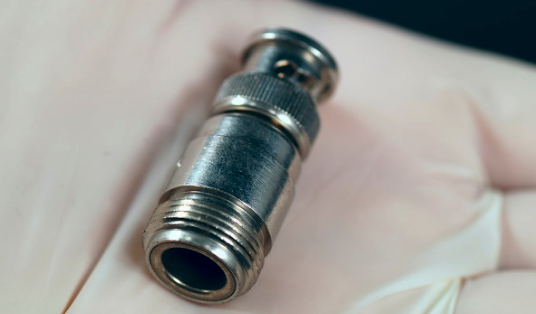Can 3D printed connectors meet the standards of the automotive industry?
Many industries around us are moving towards electrification. The digitization of passenger cars is a good example, and this may be one of the biggest impacts on the global automotive market. In addition to Tesla and Cyberruck, other mainstream auto manufacturers are also contributing to the future development of our electric vehicles (EV). Moreover, automotive original equipment manufacturers (OEMs) are also introducing more computer systems, accessories and other functions that rely on electronic interconnection functions. In addition, emerging industries such as express drones and automatic robots are constantly emerging, they will get rid of niche labels and enter the global mainstream market. All this will require extensive infrastructure to support it, so it will definitely promote the growth of related industries.
As the continuous market changes brought by electrification will lead to the emergence of more participants and products, electrical connector manufacturers will need to maintain the ability to respond quickly to satisfy existing and new customers. OEMs such as the four North American connector giants (TE, Aptiv, Molex, and Amphenol) may be serving small-volume, multi-variety markets. Since the shells and shells of electrical connectors are mostly injection products, in the injection molding process, the hard mold is the most expensive and longest delivery part.

In mass production, the cost of production tools can be shared by a large number of parts, which has great economic significance. However, in the production of parts required for small batches, the cost of tools cannot be allocated through mass production, making the production of small batches economically uneconomical. At present, most electric vehicle manufacturers produce less than 200,000 vehicles per year. At the same time, more and more car manufacturers are still pouring into this market, so finding new solutions is essential to support the growth of these markets.
Fortify's method is based on fiber-reinforced injection-molded plastic parts. The fiber reinforcement in the molded parts can improve the mechanical properties (such as strength, stiffness and HDT) by 20-100%. Facts have proved that the improved performance of this material is the reason for the continued growth of the reinforced plastic parts market. ForTIfy is applying the same method to end-use manufacturing applications, such as electrical connectors. By adding reinforcing fibers to the appropriate materials during the printing process, ForTIfy can help improve the electromechanical performance required for high-performance parts, while also meeting the small Economic requirements for mass production.
Small batch and customized solutions are very suitable for 3D printing. Using 3D printing can reduce costs and shorten delivery time. Intelligent and efficient implementation of 3D printing on the factory floor will make economically feasible small batch production operations possible.
The AM industry has begun to fit into this product market, and cooperation with 3D printing companies and connector companies has begun to see some real progress, but the challenges remain. 3D printing OEMs are working hard to find breakthrough materials and process combinations to eliminate the obstacles to additive manufacturing that cannot be fully adopted in production applications. What hinders 3D printing? For electrical connectors, the culprits are material properties and print resolution.
Looking closely at standard automotive electrical connectors, many housings are mainly made of glass-filled engineering grade thermoplastics, such as PBT, PPS, or nylon. No participant in this field can directly 3D print PBT or PPS, but nylon has been used in 3D printing for decades, and there are also glass-filled products.
For the two main commercial thermoplastic additive manufacturing technologies, FDM and SLS, due to the inevitable serious limitations caused by technical and physical factors, these processes cannot meet the resolution, surface finish, and wall required by commercial multi-cavity electrical connectors Thickness, hole size and tolerance requirements. Some DLP and SLA solutions have the ability to meet these resolution requirements, but they cannot print using industry-standard thermoplastic materials such as nylon and PBT, or they cannot meet the attributes that are critical to this application.
DLP and SLA companies are already working to improve their resin formulations to bring them closer to the high requirements of electrical connector applications. For photopolymer material scientists, it is an engineering challenge to be able to print hard enough parts to withstand the erosion of water droplets on the concrete factory floor, while also being able to withstand the ability to expand thermal cycles up to 150 ° C. Achieving specific characteristics can unleash a large number of business opportunities in harsh environments. Chemical manufacturers such as BASF, DSM and Henkel have focused on meeting the requirements of demanding automotive electrical connectors and have developed engineering photopolymers with high temperature and V0 flame retardancy, but there is no complete solution Program.
If our industry continues to focus on improving the material properties of light-cured thermoset systems, we will be able to achieve the resolution and material properties required for electrical connectors. ForTIfy is working with material partners to improve the material performance of electrical connectors and other parts to meet automotive requirements.
With the development of high-value products around the world in the direction of electrification and the continuous development of 3D printable materials hovering on the edge of complete engineering-grade performance characteristics, the market is ready to provide new solutions. With the continued cooperation between 3D printing material developers and electrical connector OEM manufacturers, it is believed that real 3D printing solutions will soon enter this global market.
If you want to know more, our website has product specifications for 3D printed connectors, you can go to ALLICDATA ELECTRONICS LIMITED to get more information

